
Published in 2020 by
KidHaven Publishing, an Imprint ofGreenhaven Publishing, LLC 353 3rd Avenue Suite 255 New York, NY 10010 2020 Booklife Publishing This edition is published by arrangement with Booklife Publishing All rights reserved. No part of this book may be reproduced in any form without permission in writing from the publisher, except by a reviewer. Edited by: Kirsty Holmes Designed by: Danielle Rippengill Cataloging-in-Publication Data Names: Twiddy, Robin. Title: Great white shark / Robin Twiddy. Description: New York: KidHaven Publishing, 2020. | Series: Teeth to tail | Includes glossary and index.
Identifiers: ISBN 9781534532977 (pbk.) | ISBN 9781534532991 (library bound) | ISBN 9781534532984 (6 pack) | ISBN 9781534533004 (ebook) Subjects: LCSH: White shark--Juvenile literature. Classification: LCC QL638.95.L3 T853 2020 | DDC 597.33--dc23 Printed in the United States of America CPSIA compliance information: Batch #BW20KL: For further information contact Greenhaven Publishing LLC, New York, New York at 1-844-317-7404. Please visit our website, www.greenhavenpublishing.com. For a free color catalog of all our high-quality books, call toll free 1-844-317-7404 or fax 1-844-317-7405. 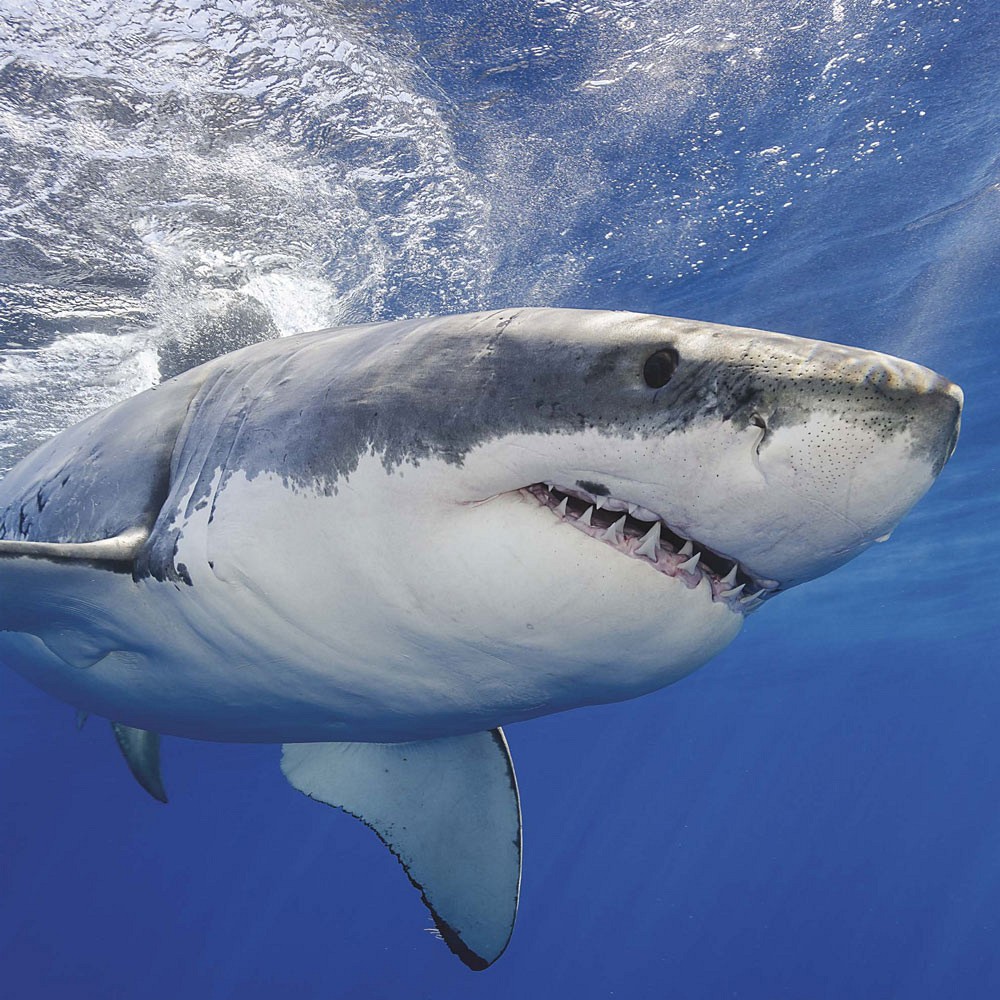 IMAGE CREDITS All images are courtesy of solarseven.
IMAGE CREDITS All images are courtesy of solarseven.
CONTENTS WORDS THAT LOOK LIKE this CAN BE FOUND IN THE GLOSSARY ON PAGE 24.
THE GREAT WHITE There are around 440 known species of sharks. Some are small, and some are large. Sharks have of the ocean. 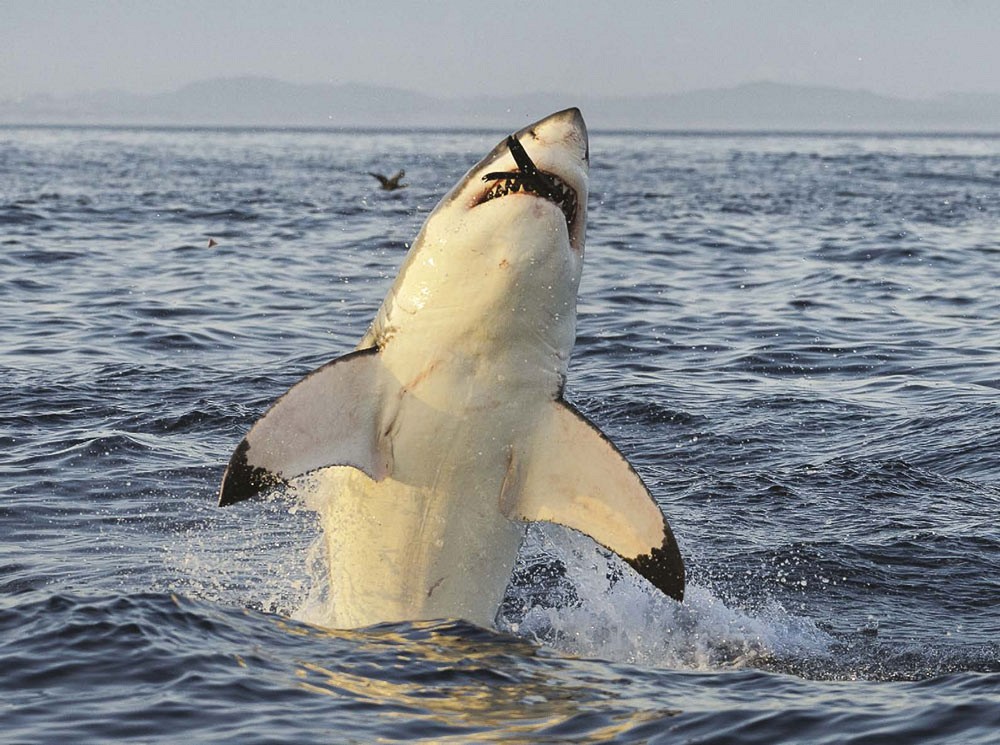 There is only one species of great white shark. They can be found near the coast, in waters between 54F (12C) and 75F (24C).
There is only one species of great white shark. They can be found near the coast, in waters between 54F (12C) and 75F (24C).  BITING FACTS: THE GREAT WHITES SCIENTIFIC NAME IS CARCHARODON CARCHARIAS.
BITING FACTS: THE GREAT WHITES SCIENTIFIC NAME IS CARCHARODON CARCHARIAS.
THIS ROUGHLY MEANS JAGGED TOOTH! The females are usually larger than the males and can grow up to 20 feet (6 m) long. Males usually grow to around 13 feet (4 m) long. TEETH The great white shark has around five rows of teeth.  BITING FACTS: THE GREAT WHITE, LIKE OTHER SHARKS, CAN LOSE AND REPLACE AROUND 30,000 TEETH IN ITS LIFETIME! Teeth in the front row are larger and used to bite . This means that when they bite, the teeth cut through flesh like a saw!
BITING FACTS: THE GREAT WHITE, LIKE OTHER SHARKS, CAN LOSE AND REPLACE AROUND 30,000 TEETH IN ITS LIFETIME! Teeth in the front row are larger and used to bite . This means that when they bite, the teeth cut through flesh like a saw!  BITING FACTS: WHEN THE GREAT WHITE SHARK BITES INTO ITS PREY, IT SHAKES ITS HEAD, TEARING OFF A CHUNK! The teeth in the great white sharks mouth move like a . When one tooth is lost at the front, the ones behind move forward to replace it! NOSE Great white shark nostrils, called nares, are not used for breathing.
BITING FACTS: WHEN THE GREAT WHITE SHARK BITES INTO ITS PREY, IT SHAKES ITS HEAD, TEARING OFF A CHUNK! The teeth in the great white sharks mouth move like a . When one tooth is lost at the front, the ones behind move forward to replace it! NOSE Great white shark nostrils, called nares, are not used for breathing.
They are only for smelling.  BITING FACTS: IF THE GREAT WHITE SHARK IS TICKLED ON THE NOSE, IT IS SENT INTO A ! This shark can smell well enough to detect a group of seals up to 2 miles (3.2 km) away! Like most sharks, when the great white swims along, water moves through the nostrils. This allows it to detect blood and other things from its prey.
BITING FACTS: IF THE GREAT WHITE SHARK IS TICKLED ON THE NOSE, IT IS SENT INTO A ! This shark can smell well enough to detect a group of seals up to 2 miles (3.2 km) away! Like most sharks, when the great white swims along, water moves through the nostrils. This allows it to detect blood and other things from its prey.  BITING FACTS: THE GREAT WHITE SHARKS NOSE IS VERY POINTED, LIKE A CONE. THIS HELPS IT MOVE THROUGH THE WATER. SKELETON Shark skeletons are not made of bone like land animals skeletons.
BITING FACTS: THE GREAT WHITE SHARKS NOSE IS VERY POINTED, LIKE A CONE. THIS HELPS IT MOVE THROUGH THE WATER. SKELETON Shark skeletons are not made of bone like land animals skeletons.
Their skeletons are made of . It is lighter and more flexible than bone, allowing the shark to float more easily. 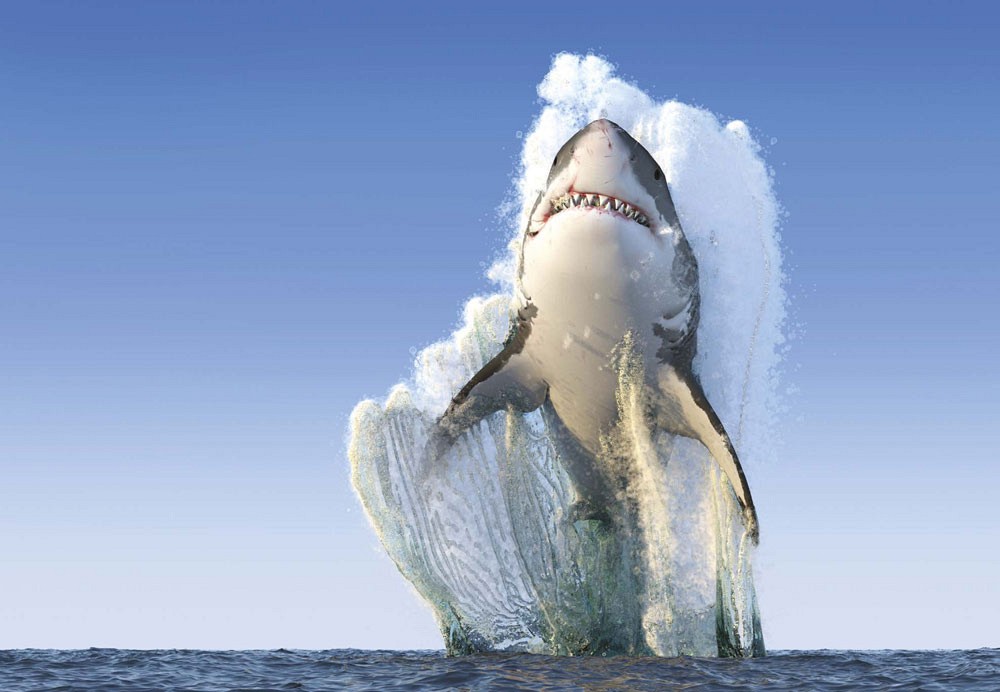 BITING FACTS: BECAUSE SHARKS DO NOT HAVE RIBS, THEY CAN BE CRUSHED UNDER THEIR OWN WEIGHT WHEN OUT OF THE WATER.
BITING FACTS: BECAUSE SHARKS DO NOT HAVE RIBS, THEY CAN BE CRUSHED UNDER THEIR OWN WEIGHT WHEN OUT OF THE WATER.  BITING FACTS: SHARKS HAVE SUPPORTING RODS MADE OUT OF CARTILAGE IN THEIR FINS. Cartilage isnt as strong as bone. So where sharks need extra strength, such as in the jaw and the spine, there is extra to make the cartilage stronger.
BITING FACTS: SHARKS HAVE SUPPORTING RODS MADE OUT OF CARTILAGE IN THEIR FINS. Cartilage isnt as strong as bone. So where sharks need extra strength, such as in the jaw and the spine, there is extra to make the cartilage stronger.
EYES All sharks have great vision and can see really well in dark or murky water. Different types of sharks have different eyes, to how deep in the ocean they live. 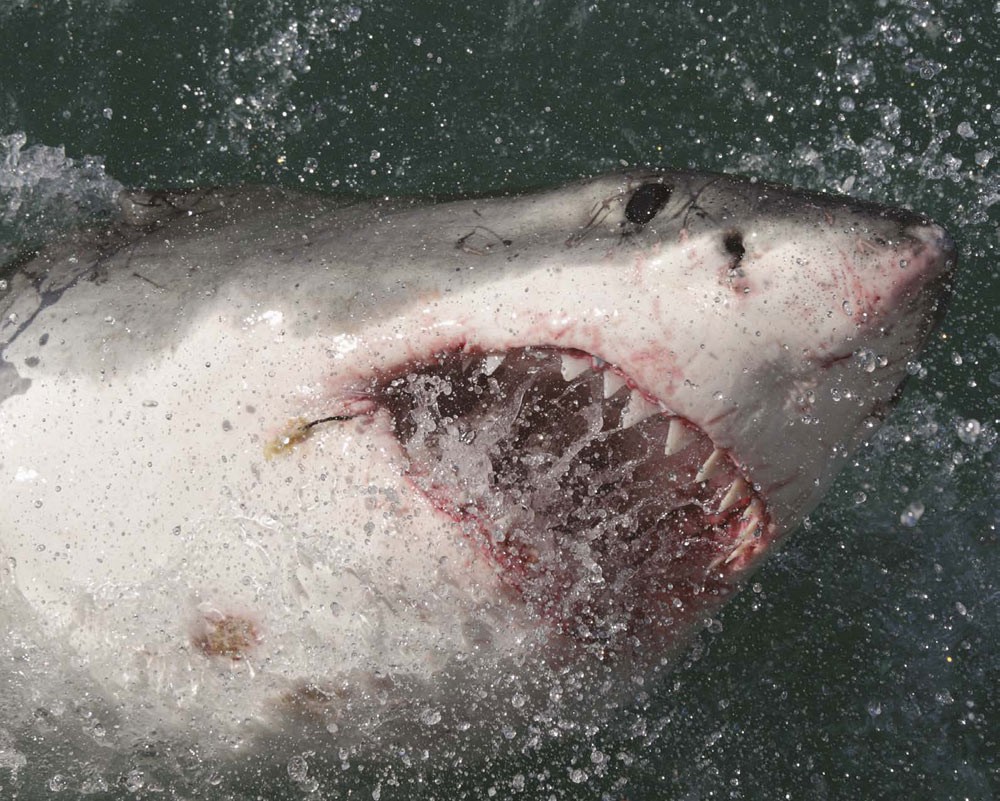 BITING FACTS: GREAT WHITE SHARK EYES LOOK BLACK, BUT THEY ARE ACTUALLY A VERY DARK BLUE! The deeper the shark lives, the smaller its eyes will be. Part of the eye, called the retina, is divided into two parts. One is for seeing in normal daylight.
BITING FACTS: GREAT WHITE SHARK EYES LOOK BLACK, BUT THEY ARE ACTUALLY A VERY DARK BLUE! The deeper the shark lives, the smaller its eyes will be. Part of the eye, called the retina, is divided into two parts. One is for seeing in normal daylight. 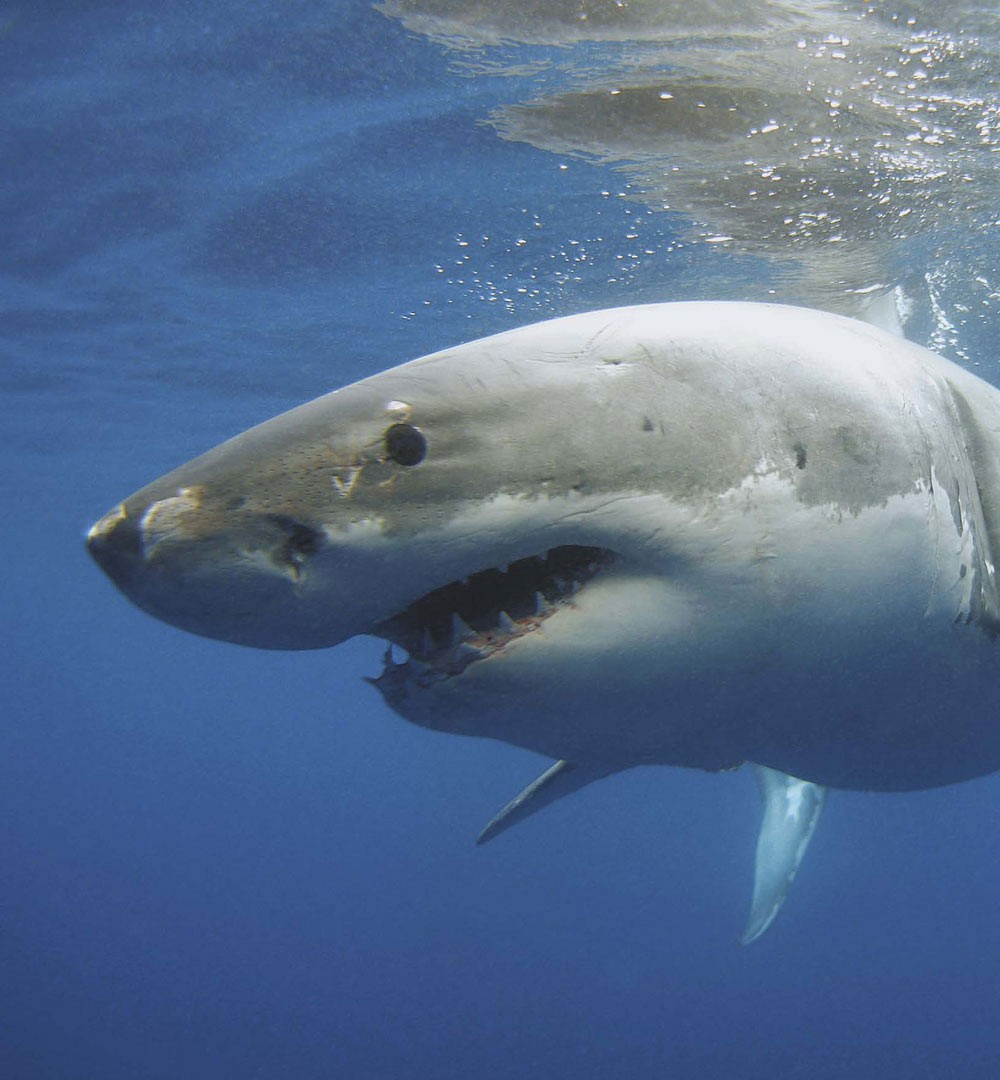 BITING FACTS: THE GREAT WHITE WILL ROLL ITS EYES BACK INTO ITS HEAD TO PROTECT THEM WHEN FEEDING.
BITING FACTS: THE GREAT WHITE WILL ROLL ITS EYES BACK INTO ITS HEAD TO PROTECT THEM WHEN FEEDING.  BITING FACTS: THE GREAT WHITE WILL ROLL ITS EYES BACK INTO ITS HEAD TO PROTECT THEM WHEN FEEDING.
BITING FACTS: THE GREAT WHITE WILL ROLL ITS EYES BACK INTO ITS HEAD TO PROTECT THEM WHEN FEEDING.
This means the shark can be a deadly hunter all the time! FINS All sharks have either four or five types of fins. The great white shark has five types of fins. These are: 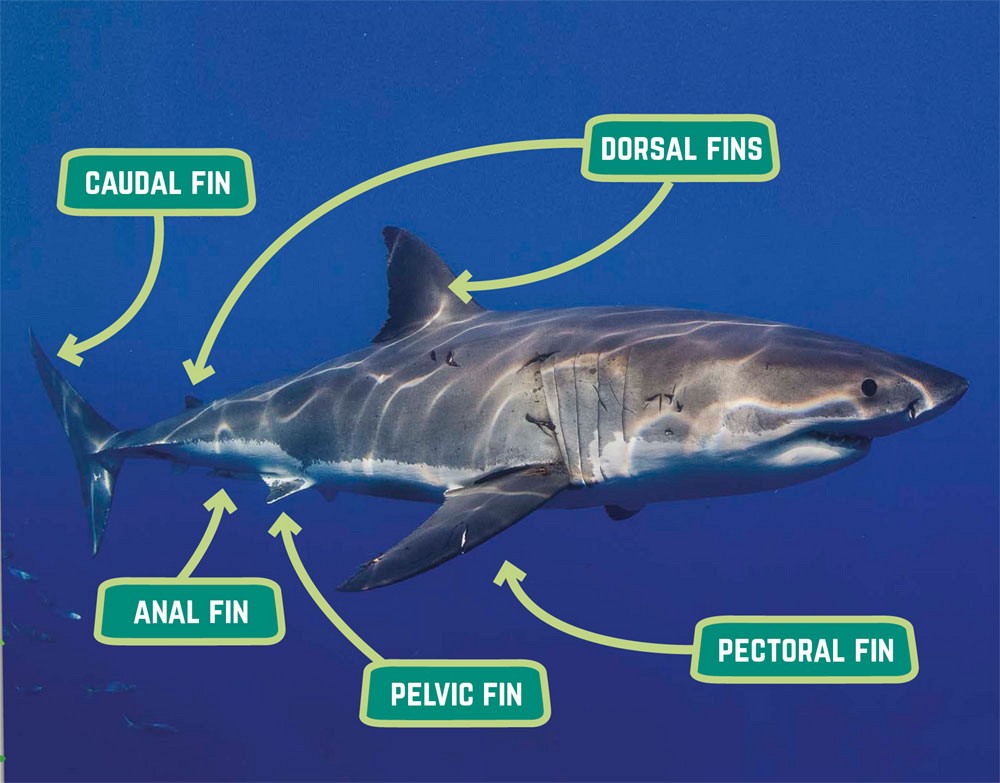
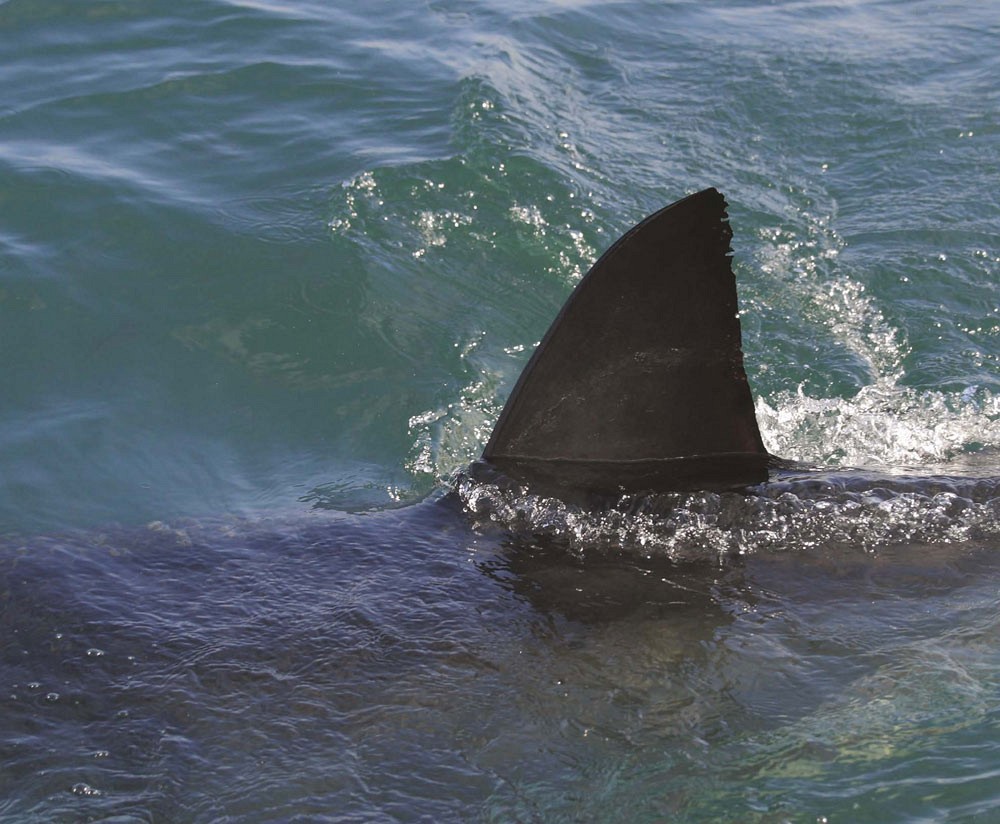 BITING FACTS: WHEN SHARKS SWIM WITH THEIR DORSAL FINS BREAKING OUT OF THE WATER, IT IS CALLED KNIFING. The different fins have different jobs when it comes to keeping the shark upright in the water and for swimming. When a great white drops its pectoral fins, it is getting ready to move quickly. SKIN Shark skin is covered in tiny, tooth-like scales, called dermal denticles.
BITING FACTS: WHEN SHARKS SWIM WITH THEIR DORSAL FINS BREAKING OUT OF THE WATER, IT IS CALLED KNIFING. The different fins have different jobs when it comes to keeping the shark upright in the water and for swimming. When a great white drops its pectoral fins, it is getting ready to move quickly. SKIN Shark skin is covered in tiny, tooth-like scales, called dermal denticles.
The way that these are layered forces water past them, making the shark quick in the water. 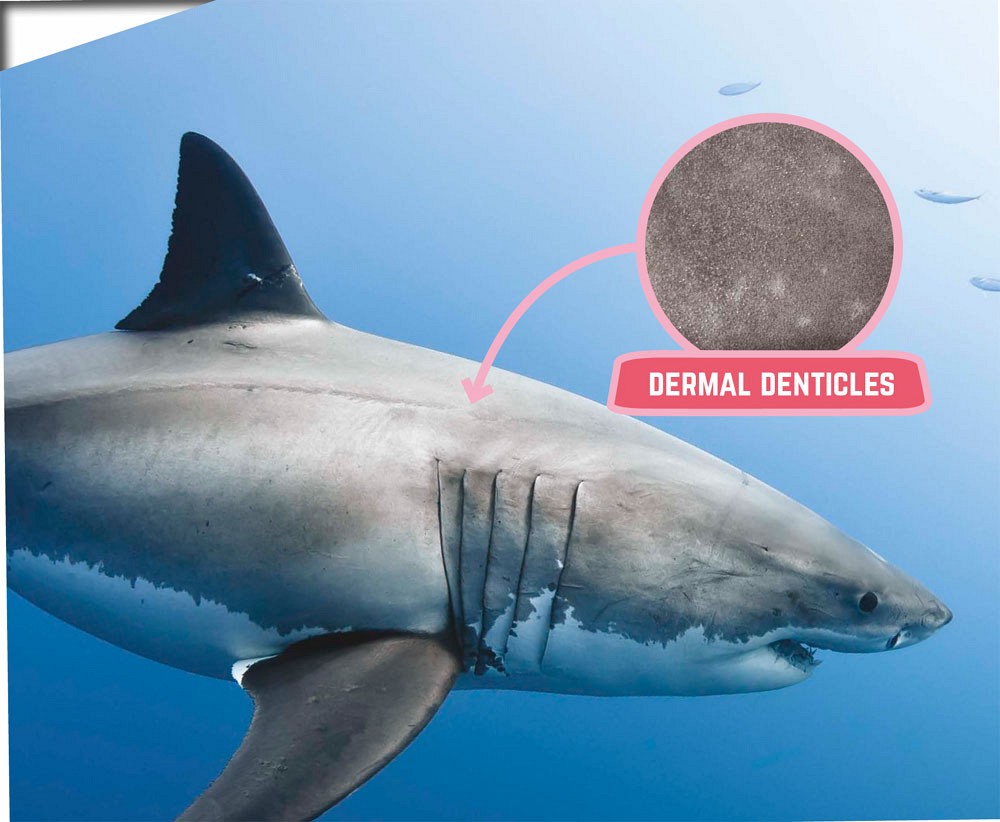 BITING FACTS: SHARK SKIN IS ROUGH LIKE SANDPAPER! A great white sharks skin can range from gray to brown or blue on its dorsal side (the top of the shark).
BITING FACTS: SHARK SKIN IS ROUGH LIKE SANDPAPER! A great white sharks skin can range from gray to brown or blue on its dorsal side (the top of the shark). 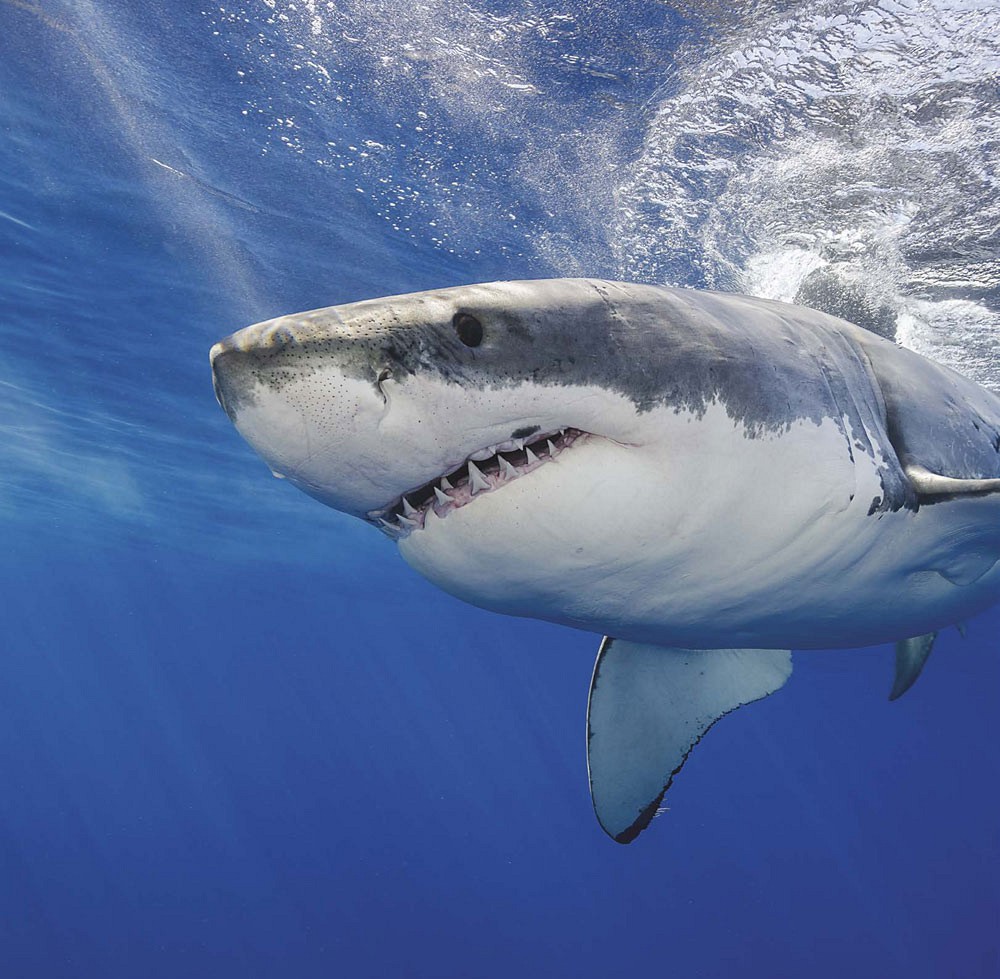 BITING FACTS: THESE COLORS THE GREAT WHITE AGAINST THE LIGHT SURFACE OR DARK DEPTHS OF THE OCEAN. The bright white on its ventral side (the underside of the shark) is where the great white gets its name. TAIL The tail fin is called the caudal fin. This is the fin the shark uses to speed up and slow down.
BITING FACTS: THESE COLORS THE GREAT WHITE AGAINST THE LIGHT SURFACE OR DARK DEPTHS OF THE OCEAN. The bright white on its ventral side (the underside of the shark) is where the great white gets its name. TAIL The tail fin is called the caudal fin. This is the fin the shark uses to speed up and slow down.
Next page

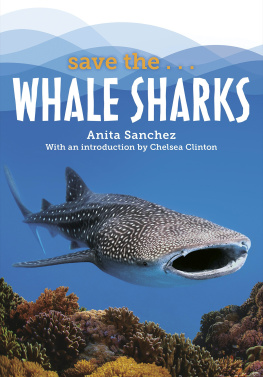








 IMAGE CREDITS All images are courtesy of solarseven.
IMAGE CREDITS All images are courtesy of solarseven. There is only one species of great white shark. They can be found near the coast, in waters between 54F (12C) and 75F (24C).
There is only one species of great white shark. They can be found near the coast, in waters between 54F (12C) and 75F (24C).  BITING FACTS: THE GREAT WHITES SCIENTIFIC NAME IS CARCHARODON CARCHARIAS.
BITING FACTS: THE GREAT WHITES SCIENTIFIC NAME IS CARCHARODON CARCHARIAS. BITING FACTS: THE GREAT WHITE, LIKE OTHER SHARKS, CAN LOSE AND REPLACE AROUND 30,000 TEETH IN ITS LIFETIME! Teeth in the front row are larger and used to bite . This means that when they bite, the teeth cut through flesh like a saw!
BITING FACTS: THE GREAT WHITE, LIKE OTHER SHARKS, CAN LOSE AND REPLACE AROUND 30,000 TEETH IN ITS LIFETIME! Teeth in the front row are larger and used to bite . This means that when they bite, the teeth cut through flesh like a saw!  BITING FACTS: WHEN THE GREAT WHITE SHARK BITES INTO ITS PREY, IT SHAKES ITS HEAD, TEARING OFF A CHUNK! The teeth in the great white sharks mouth move like a . When one tooth is lost at the front, the ones behind move forward to replace it! NOSE Great white shark nostrils, called nares, are not used for breathing.
BITING FACTS: WHEN THE GREAT WHITE SHARK BITES INTO ITS PREY, IT SHAKES ITS HEAD, TEARING OFF A CHUNK! The teeth in the great white sharks mouth move like a . When one tooth is lost at the front, the ones behind move forward to replace it! NOSE Great white shark nostrils, called nares, are not used for breathing. BITING FACTS: IF THE GREAT WHITE SHARK IS TICKLED ON THE NOSE, IT IS SENT INTO A ! This shark can smell well enough to detect a group of seals up to 2 miles (3.2 km) away! Like most sharks, when the great white swims along, water moves through the nostrils. This allows it to detect blood and other things from its prey.
BITING FACTS: IF THE GREAT WHITE SHARK IS TICKLED ON THE NOSE, IT IS SENT INTO A ! This shark can smell well enough to detect a group of seals up to 2 miles (3.2 km) away! Like most sharks, when the great white swims along, water moves through the nostrils. This allows it to detect blood and other things from its prey.  BITING FACTS: THE GREAT WHITE SHARKS NOSE IS VERY POINTED, LIKE A CONE. THIS HELPS IT MOVE THROUGH THE WATER. SKELETON Shark skeletons are not made of bone like land animals skeletons.
BITING FACTS: THE GREAT WHITE SHARKS NOSE IS VERY POINTED, LIKE A CONE. THIS HELPS IT MOVE THROUGH THE WATER. SKELETON Shark skeletons are not made of bone like land animals skeletons. BITING FACTS: BECAUSE SHARKS DO NOT HAVE RIBS, THEY CAN BE CRUSHED UNDER THEIR OWN WEIGHT WHEN OUT OF THE WATER.
BITING FACTS: BECAUSE SHARKS DO NOT HAVE RIBS, THEY CAN BE CRUSHED UNDER THEIR OWN WEIGHT WHEN OUT OF THE WATER.  BITING FACTS: SHARKS HAVE SUPPORTING RODS MADE OUT OF CARTILAGE IN THEIR FINS. Cartilage isnt as strong as bone. So where sharks need extra strength, such as in the jaw and the spine, there is extra to make the cartilage stronger.
BITING FACTS: SHARKS HAVE SUPPORTING RODS MADE OUT OF CARTILAGE IN THEIR FINS. Cartilage isnt as strong as bone. So where sharks need extra strength, such as in the jaw and the spine, there is extra to make the cartilage stronger. BITING FACTS: GREAT WHITE SHARK EYES LOOK BLACK, BUT THEY ARE ACTUALLY A VERY DARK BLUE! The deeper the shark lives, the smaller its eyes will be. Part of the eye, called the retina, is divided into two parts. One is for seeing in normal daylight.
BITING FACTS: GREAT WHITE SHARK EYES LOOK BLACK, BUT THEY ARE ACTUALLY A VERY DARK BLUE! The deeper the shark lives, the smaller its eyes will be. Part of the eye, called the retina, is divided into two parts. One is for seeing in normal daylight.  BITING FACTS: THE GREAT WHITE WILL ROLL ITS EYES BACK INTO ITS HEAD TO PROTECT THEM WHEN FEEDING.
BITING FACTS: THE GREAT WHITE WILL ROLL ITS EYES BACK INTO ITS HEAD TO PROTECT THEM WHEN FEEDING. 
 BITING FACTS: WHEN SHARKS SWIM WITH THEIR DORSAL FINS BREAKING OUT OF THE WATER, IT IS CALLED KNIFING. The different fins have different jobs when it comes to keeping the shark upright in the water and for swimming. When a great white drops its pectoral fins, it is getting ready to move quickly. SKIN Shark skin is covered in tiny, tooth-like scales, called dermal denticles.
BITING FACTS: WHEN SHARKS SWIM WITH THEIR DORSAL FINS BREAKING OUT OF THE WATER, IT IS CALLED KNIFING. The different fins have different jobs when it comes to keeping the shark upright in the water and for swimming. When a great white drops its pectoral fins, it is getting ready to move quickly. SKIN Shark skin is covered in tiny, tooth-like scales, called dermal denticles. BITING FACTS: SHARK SKIN IS ROUGH LIKE SANDPAPER! A great white sharks skin can range from gray to brown or blue on its dorsal side (the top of the shark).
BITING FACTS: SHARK SKIN IS ROUGH LIKE SANDPAPER! A great white sharks skin can range from gray to brown or blue on its dorsal side (the top of the shark).  BITING FACTS: THESE COLORS THE GREAT WHITE AGAINST THE LIGHT SURFACE OR DARK DEPTHS OF THE OCEAN. The bright white on its ventral side (the underside of the shark) is where the great white gets its name. TAIL The tail fin is called the caudal fin. This is the fin the shark uses to speed up and slow down.
BITING FACTS: THESE COLORS THE GREAT WHITE AGAINST THE LIGHT SURFACE OR DARK DEPTHS OF THE OCEAN. The bright white on its ventral side (the underside of the shark) is where the great white gets its name. TAIL The tail fin is called the caudal fin. This is the fin the shark uses to speed up and slow down.